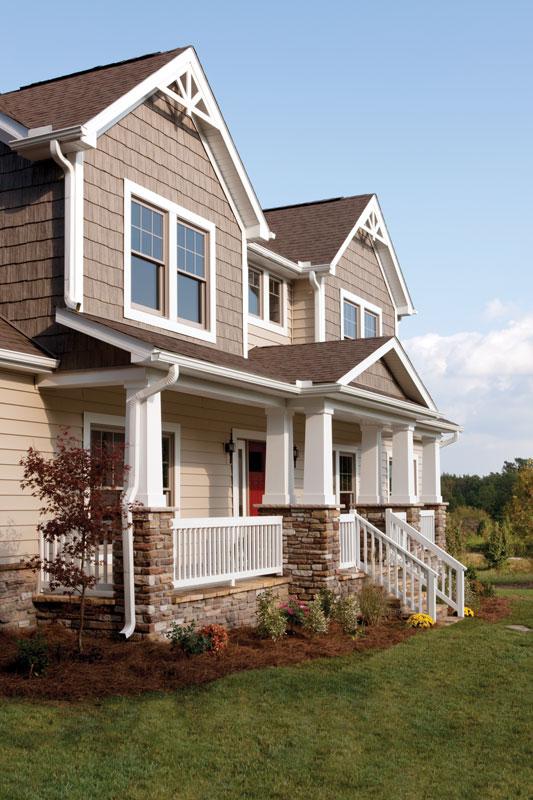Windows and Doors, Build Smart, Sustainable Building

The single most important aspect of your windows is how they help insulate your home. But, did you know there are several factors that can effect your windows’ energy efficiency? Before you replace your windows we want you to be knowledgeable of these factors and what energy efficient windows can do for your home.
There are several kinds of materials that can make up your window frame.

Here are a few of the most popular window frame materials.
Vinyl windows are known for their ease of maintenance, colors that coordinate with any exterior palette, and their energy efficiency. These windows have a high level of insulation, eliminating loss of air and keeping the muggy summer heat, or frigid winter winds, out.
Wood windows require a bit more maintenance. However, wood is an excellent insulator, making wood windows extremely energy efficient.
Aluminum windows are low-cost and low-maintenance. When considering these windows in terms of energy efficiency, it’s best to look for thermally-broken aluminum windows. A thermal break is a low-conducting composite material that separates the aluminum on the outside of the window frame from the aluminum on the inside and is designed to reduce the transfer of heat or cold between your home and the outside.
Composite windows combine multiple window materials to take advantage of the benefits of each. Although these windows typically perform well, they are the most expensive window in the market.
Glass packages have the greatest effect on your window’s energy efficiency. You may pay a little more for a great glass package up front, but you’ll also save more in the long run.

Here are some glass options to keep in mind.
Low E – Reflects infrared light keeping heat inside in the winter and outside in the summer. It can also help keep your carpets and furniture from fading.
Gas Fill – Either Argon or Krypton can be placed in between glass panes to provide greater insulation than regular air.
ENERGY STAR is a government supported program that uses a specific criteria to define an energy efficient window.
How does ENERGY STAR determine what makes energy efficient windows? By measuring four different parts of the window: the glass, the gas, the spacer and the reinforcement. The combination of these factors influences the unit’s U-value and solar heat gain, both of which are drivers for meeting ENERGY STAR performance level.

To be labeled as an ENERGY STAR product, the U-factor and SHGC (Solar Heat Gain Coefficient) ratings must be less than or equal to those established by ENERGY STAR.
Whether you’re a homeowner looking for a professional to help with installation or a pro interested in purchasing Ply Gem brands and product lines, we’ve got you covered.
